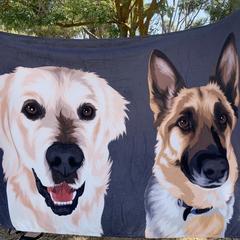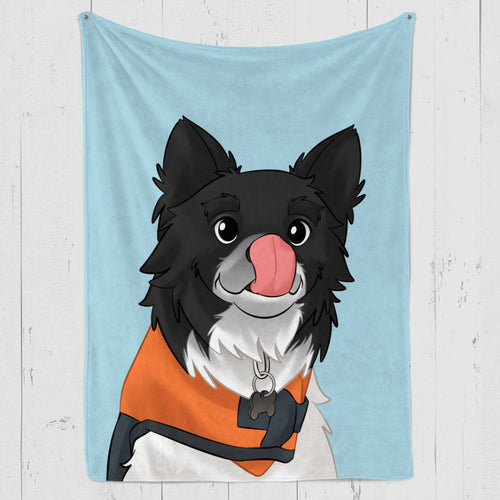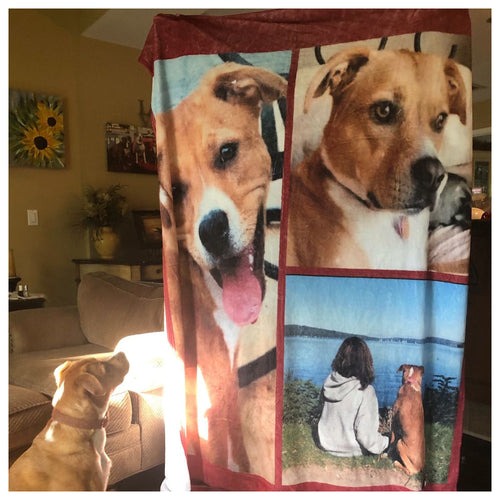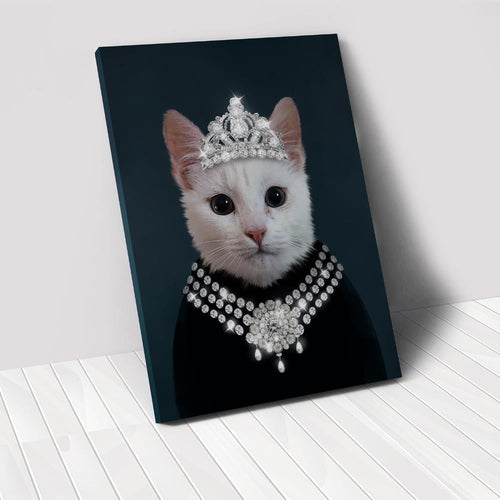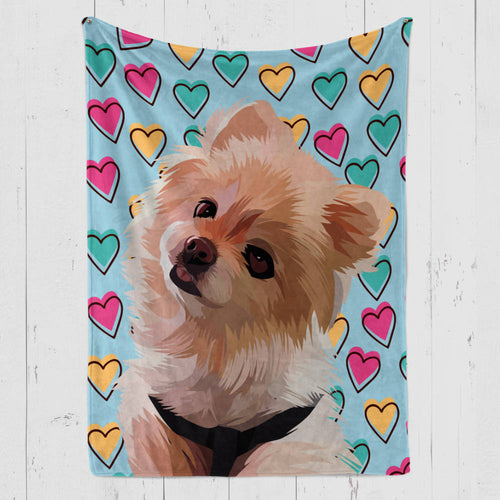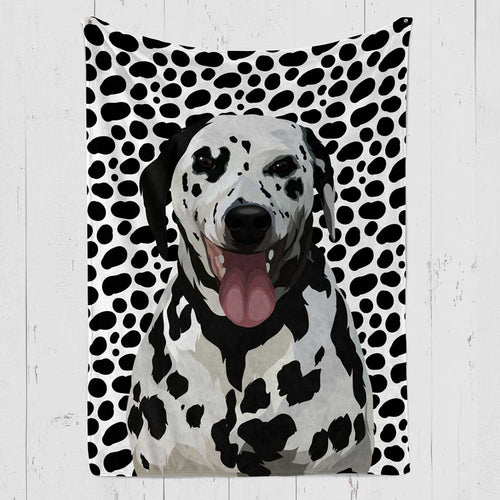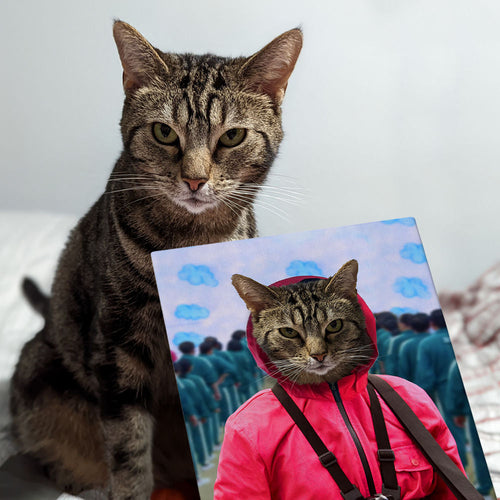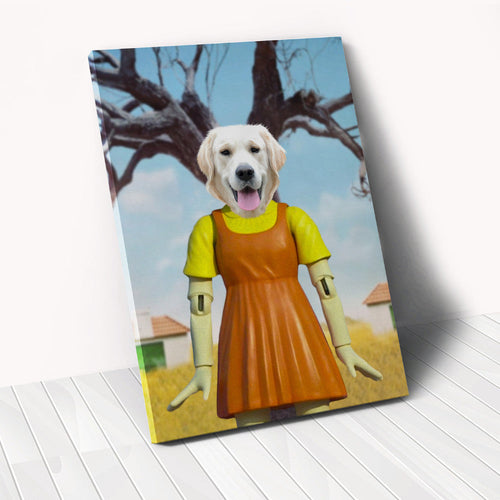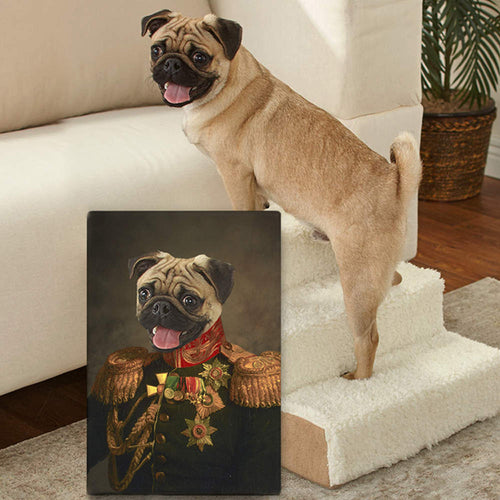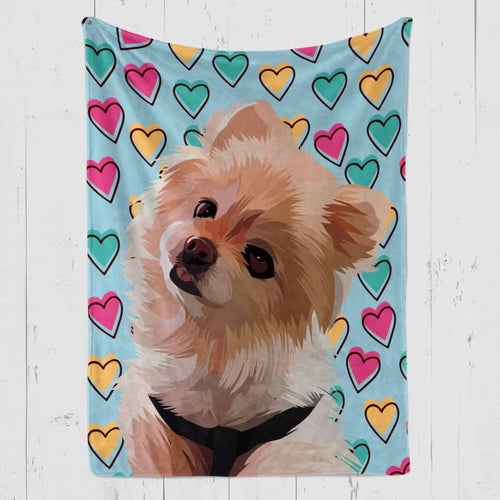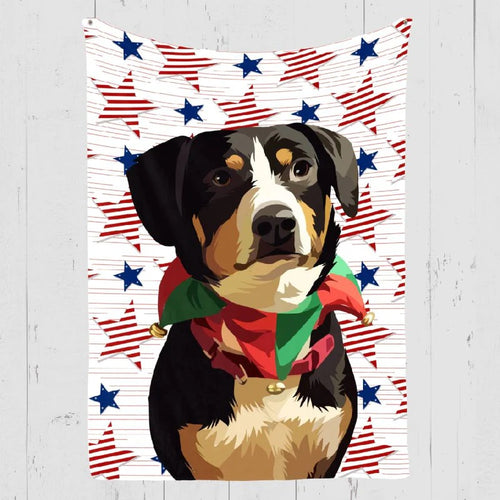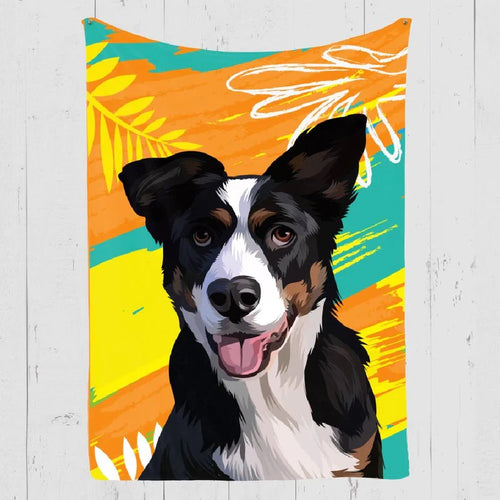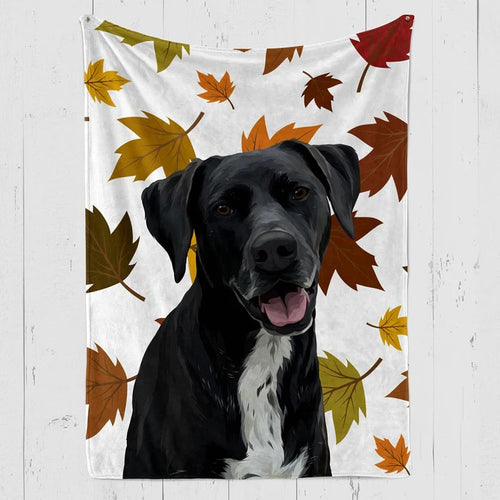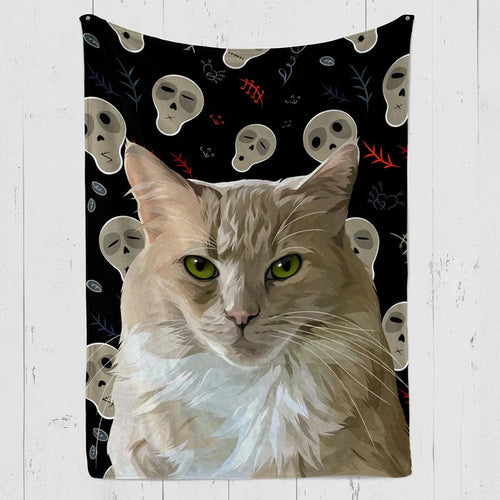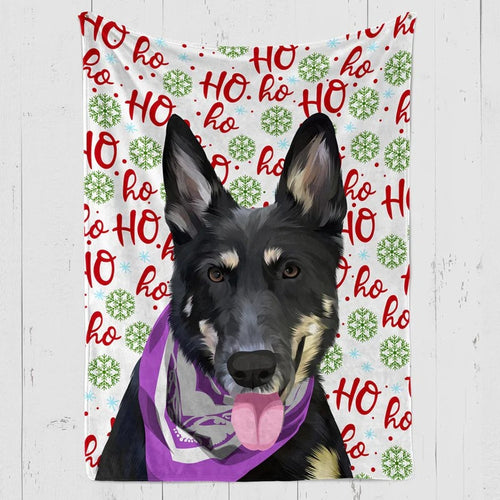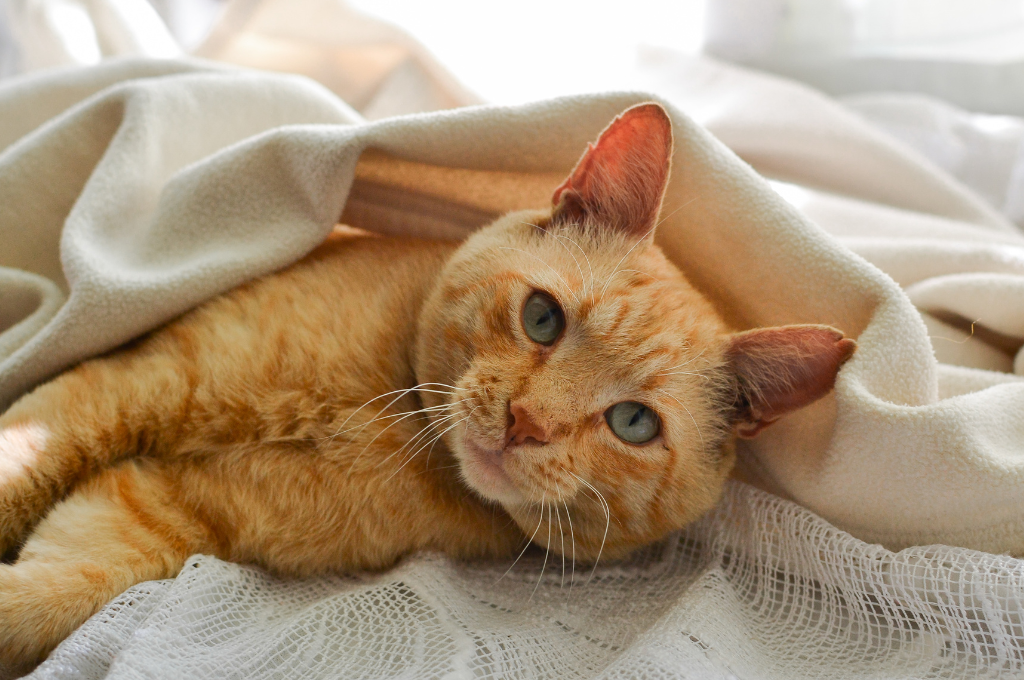What Is Circling Behavior?
Dogs frequently circle two or three times before settling down to make themselves comfortable. How can you tell if something like this is normal or a sign of several serious conditions?
There are many warning signs to watch out for. First, you have probably never seen circling behavior before. They will act in a way that goes beyond any typical circling you have seen previously. You will notice that a dog who engages in uncontrollable circling always circles in the same direction, like a dog walking in circles to the left. They will find it very difficult to change direction and may collide with objects if you try to divert their attention while they are circling in this manner.
As time goes on, you will start to see circling behavior more frequently because it tends to get worse over time. Your dog may circle more frequently as part of their regular walking, always going in the same direction, so you might not initially notice the circling behavior. But as time passes, they will start to circle more instead of walking.
Additional symptoms frequently accompany it. These behaviors include aimless wandering, standing still and staring into space, getting stuck in places they can easily back out of, and acting strangely around everyday objects. If your dog exhibits circling behavior, you should watch for any of these signs, as they might point to a problem.
Why Does My Dog Walk in Circles?

It can be a sign of several issues when your dog walks in circles. However, this symptom rarely occurs by itself, so you should watch out for other indications that your dog may be experiencing something.
The following is a list of the most typical causes when you are wondering why my dog is walking in circles:
1. Normal Behavior
Although uncommon, some dogs will walk in circles before settling down to sleep. Dogs in the wild may circle to check for nearby predators using their senses of sight and smell; this behavior appears to be instinctive. They might also trample the vegetation to make a comfortable place to rest. They might also simply choose the most comfortable position when they lie down.
Dogs are more likely to circle around before going potty. Although there are a few theories, the causes are unclear. Similar to its before-sleep routine, the animal may be scanning for predators when it is most vulnerable or trample on tall vegetation for cleanliness. Dogs can communicate with one another using body language, so the animal might be looking to see if any other canines have been in the area.
2. Abnormal Dog Movement
If you find your dog wandering around aimlessly, you should look into it. The animal might not be able to walk normally due to neurological damage to the brain or alterations in brain chemistry. You might be able to determine this with a few straightforward tests. If the animal can be distracted from its circular walk and resume its normal gait, this suggests that there is no neurological issue. If the dog's pupils are dilated, this may indicate a brain issue that was possibly brought on by a head injury.
Take your dog to visit the vet to find the causes of the issue and these tests might yield some useful information. The most likely cause, if it is not neurological in nature, is most likely an inner ear infection. Antibiotics can be used to treat this. A dog behaviorist might be able to help if no obvious cause can be found. If the symptom appears to have a neurological origin, it is much more serious and may have a variety of causes.
3. Inner Ear Infection
An inner ear infection is one of the most typical causes of a dog walking in circles to the left. They will require immediate treatment if the infection becomes so severe that it affects their behavior in this way. You may also notice other signs like a bad odor near the ear, difficulty focusing the eyes, and frequent head shaking.
If their ear infection is serious enough to cause dog circling, it has likely already spread down the ear quite a bit. Speak with your veterinarian, who will likely perform a deep ear cleaning and issue a prescription.
Regularly cleaning your dog's ears can stop them from getting ear infections. The excessive wax in your dog's ears can create the perfect conditions for an infection. For dogs with floppy ears, regular cleaning is especially crucial. Because of how their ear flaps cover the ear canals, the area is dark and moist, which is ideal for bacteria.
4. Vestibular Syndrome
The vestibular syndrome is a condition that primarily impacts older dogs' inner ears and, as a result, their balance. Although the syndrome's exact cause is unknown, it is most likely ear damage from an injury, infection, or nutritional deficiency.
In addition to circling, you may observe other severe symptoms like head-down walking, frequent falls, and excessive drooling. It frequently resembles stroke-like symptoms. If they exhibit these signs, you must take your dog to the vet for a diagnosis. During treatment, they will probably prescribe various drugs, such as antibiotics, corticosteroids, and antifungal or antiepileptic ones.
5. Head Injuries
Circling could be caused by head injuries, which can seriously impair your dog's sense of direction. Your dog might also exhibit odd pupil dilation, cry out when its head is touched in certain places, and lose appetite. While dogs can recover fully from concussions, delaying treatment increases the risk of bleeding and swelling that can permanently harm the brain.
Depending on the severity of the injury, they might need to refrain from specific activities for up to six months to prevent aggravating the situation.
Brain injuries are not always the result of a blow to the head. For instance, untreated liver damage can result in similar neurological symptoms, and the blood puts too much pressure on the brain.
6. Cushing’s Disease
If an older dog begins to circle, it may have Cushing's disease. This occurs when a dog's body produces too much cortisol, which triggers an adverse reaction. This frequently includes increased hunger and thirst, decreased activity, weight changes, and excessive panting.
The hormone imbalance prevents your dog's body from converting food into energy, which impacts every organ in the body, including the brain. Circling and pacing are two of the most prevalent behavioral changes frequently accompanying the syndrome. Current treatments for Cushing’s disease are mostly experimental and progressive.
7. Behavioral Disorders
Dogs, like humans, can experience behavioral disorders, some of which may cause them to circle around. Dogs who have obsessive-compulsive disorder (OCD), for instance, frequently need to circle a particular area several times before finishing an activity.
While other medical symptoms like drooling or blurry vision are probably not visible to you, you might notice that this is not their normal dog walking behavior. Circling behavior can also result from anxiety, but it is typically related to a traumatic event like being around loud noises like fireworks. Being stuck for extended periods of time in a space that is too small for them may also result in this reaction.
8. Dementia
Circling can also be a symptom of canine dementia and contributes to the overall disorientation they experience due to forgetting important details about their lives. Other behavioral alterations may include moments of aggression toward you or other household members (human or animal), forgetting where their food bowl is, forgetting training (such as house training), and other changes.
For dog dementia, there is no known treatment. Although decay is typically progressive, some dietary supplements and mentally stimulating activities may aid in slowing it down. This is a time to watch your dog to ensure they are living well and that dementia will not eventually rob them of the joy that most dogs should feel daily.
9. Anxiety
Your dog may be feeling anxious for some reason. Suppose your dog is more anxious than usual, uncomfortable, or experiencing some other type of discomfort. In that case, it might help to give them something to calm them down until the underlying issue has been properly treated. However, this will not solve the problem.
10. Neosporosis
Neosporosis is a potentially fatal illness transmitted by parasites in some raw meats and the faeces of infected animals. High temperatures or freezing can kill the parasites, but giving raw meat to a dog is never a good idea, even if it has been frozen first. The illness can also be passed from dog to dog by consuming contaminated food or liquids.
Neosporosis signs include the dog starting to circle and the head sagging to one side. The dog might pass out after walking because neosporosis affects the muscles and spinal cord. Neosporosis can result in paralysis, brain damage, and even death. The parasite that causes the disease creates cysts that are incredibly resistant to treatment, but some antibiotics may work if taken early.
11. Canine Distemper
Canine distemper is a different illness that can collapse and circle in place. A virus causes it and typically begins with a lung or respiratory infection. The later stage frequently results in neurological damage, paralysis, muscle twitches, and a tendency to walk in circles.
Dogs with distemper may have nasal discharge and move awkwardly. Aggression, laziness, wandering, and excessive thirst are additional warning signs. Pets most commonly contract distemper in contact with other dogs because the disease is spread through the fluids produced when coughing and sneezing. Since puppies are particularly prone to this illness, many veterinarians advise vaccinations beginning at a young age. Although the illness is not cured, the pet may gradually recover with good general care.
12. Systemic Lupus Erythematosus (SLE)
SLE is an autoimmune disease affecting the entire body and can result in arthritis, muscle weakness, and a wide range of other symptoms like fever and kidney disease. Diagnoses can be challenging because the disease can mimic many different conditions. A veterinarian can determine the diagnosis using the blood test results.
Early symptoms of SLE include paralysis, a limp, and a sudden inability to walk straight. Sunlight exposure frequently makes the condition worse. The German shepherd, Shetland sheepdog, collie, poodle, beagle, Afghan hound, and Irish setter are believed to be the breeds most prone to SLE because of a genetic predisposition. Drugs that suppress the immune system are typically used to treat the disease, but this can make the dog more vulnerable to infections.
What do I do if my Dog is Walking in circles?

1. How do I know whether it is Serious?
Your dog may be simply going around in circles for his amusement. This is particularly likely if your dog spins around before going potty or lying down but otherwise exhibits no compulsion or other symptoms of illness.
Dogs also circle to investigate. This typically comes with sniffing and is nothing to be concerned about.
But if your dog spins a lot daily, it might be a sign of one of the abovementioned conditions. Taking your dog to the vet as soon as possible is crucial because some of these causes could be as serious as a tumor.
Three Tips to Help
Here are some solutions if you are unsure how to stop dogs spinning in circles.
Exercise.If your dog has no underlying medical issues, his circling may result from pent-up energy. To help him behave better, give him longer walks and more active playtime.
Remove sources of stress.Circling in anxious dogs can also be brought on by specific environmental stressors. He might, for instance, be moving in circles due to loud noises. To stop your dog from circling, eliminate things that may cause him stress.
Changes in diet.Your elderly dog may be circling in circles due to dietary problems. Talk to your veterinarian about dietary modifications to help reduce this kind of circling.
It can be challenging to determine whether your dog’s tendency to circle around is a sign of something more serious and, therefore, out of their control, or if they are just being weird.
However, you should take your dog to the veterinarian if they cannot control their behavior and stop circling. To determine what is wrong with your dog, they will perform similar tests and question you about additional symptoms.
2. How to prevent your dog Walking in Circles

The practical steps a pet owner can take to prevent their companion from going in circles are discussed in this section.
- Maintain a good routine for your dog's ear care. Cleaning the dog's ears regularly will help prevent damage, mites, and excessive wax production.
- If your dog has a genetic OCD disorder, work with them on obedience and reward-based training to gradually reduce anxiety-related behaviors like walking in circles.
- Regularly visit the vet for examinations. This procedure aids in detecting problems with the dog's coordination, hearing, vision, or hearing, as well as lumps or injuries.
- Participate with your dog in outdoor games, jogs, and other physical activities. This prevents loneliness and boredom and lowers the likelihood of health issues.
- Dog toys and puzzles support your canine companion's cognitive development and safeguard against Vestibular syndrome.
- An effective way to manage stress and anxiety is through dog therapy and socialization with other dogs and puppies. Walking in circles can be avoided largely by selecting the appropriate program to soothe and calm your anxious friend.
- If your dog has been diagnosed with dementia, exercise extra caution to prevent injuries from sharp objects being struck by your dog. Make sure the area is secure and safe.
- In the event of infections or parasitic attacks, never treat dogs yourself. Consult a veterinarian immediately; they can prescribe the appropriate analgesics and antibiotics that are safe for your dog.
- It is highly likely that your dog has an infection of the anal gland if they frequently bite their tail. Ask a veterinarian technician or a dog grooming professional for assistance. The anal glands can be cleaned, and the appropriate medication can be given. Dogs tend to "scoot" on the carpet or floor, which can aggravate the infected area if this is not addressed.
Frequently Asked Questions
Is walking in circles a normal behavior for dogs?
Don’t postpone your visit to the veterinarian if you notice your dog going in circles. This is almost always a symptom of a severe neurologic disorder causing forebrain dysfunction.
You will be referred to a veterinary neurologist for brain imaging if your veterinarian has reason to believe your pet has a brain issue. Magnetic resonance imaging, or MRI, is the most effective method for making a precise diagnosis, assessing the severity of the condition, establishing treatment options, and estimating prognosis.
Could there be a medical reason for my dog's leftward circling behavior?
Speech changes are typically the first indication of neurological issues in people. In dogs, we must rely on alternative indicators. A few behavioral signs, whether brought on by an injury or the onset of dog dementia, are likely to point to a problem with your dog's brain.
The main signs include head pressing (the compulsive act of pressing the head against surfaces), circling, generally disoriented behavior, the inability to use one or more limbs, unexplained weakness or stumbling, and the inability to use one or more limbs. Visit your veterinarian as soon as you notice any of these signs.
Could anxiety or stress be a factor in my dog's leftward circling?
Similar to humans, when stressed, a dog pacing in circles can be frequent. This might indicate panic or just general nervousness. Your dog might tremble or shake as well. Once the stressor is eliminated, this frequently stops.
What should I do if my dog's circling behavior seems abnormal or excessive?
Actually, many dogs will walk in circles just before they urinate, defecate, or lay down. Other than in those circumstances, a dog frequently circling or dogs spinning in circles, either slowly or quickly, is a sign of an underlying health problem. Do not ignore it if you see your dog running around in circles. Circle walking could be a warning sign of a serious health issue in your dog, so you should have your dog checked out by a qualified veterinarian as a precaution.
Are certain breeds or age groups of dogs more prone to walking in circles?
Some dog breeds are believed to have a genetic predisposition to running in circles. German Shepherds and Bull Terriers are examples of this. But just because your dog belongs to one of these breeds does not mean they will always "circle" or chase their tails.
How can I help or train my dog to stop walking in circles if it becomes problematic?
You must identify the cause to stop your dog from turning in circles. It frequently indicates a medical condition that needs to be treated by a doctor, such as an ear infection or brain injury. Circling, however, can also be a symptom of anxiety. This is frequently brought on by a traumatic event or a lack of constructive outlets for their energy. There are several things you can try to do to try and alleviate the situation if your vet suspects that your dog's circling is brought on by anxiety.
This entails increasing their physical activity, like walks, playtime, and mental stimulation. To keep them busy when you are not around, buy puzzle toys. See if there is anything you can do to move them to a larger space or have someone come and take them for a walk to reduce their time in confinement if they are restricted to a small space during specific times of the day.
Conclusion
Dogs sometimes behave in odd ways. They chase and bark at things you cannot see or hear. It can be challenging to determine whether a dog's behavior is simply typical, eccentric dog walking behavior, or an indication of a more serious problem.
One of those behaviors that can be challenging to interpret is dog circling, or walking in circles. A dog will frequently circle before becoming comfortable, and who does not enjoy watching a dog chase its own tail?
How can you tell when circling is abnormal, then? When circling appears compulsive or uncontrollable, you should start to be concerned. You can quickly determine if your dog can change directions by distracting them while they are circling.
A dog with circling issues will always prefer to walk in the same direction and find it difficult to change. Circling in this manner almost always indicates that your dog has a brain or ear issue. Although a precise diagnosis will depend on additional symptoms, it is undoubtedly worthwhile to visit the veterinarian because it is unlikely to be a condition that will improve on its own.
Sources
- Labrador Training HQ - https://www.labradortraininghq.com/labrador-health-and-care/old-dog-walking-in-circles/
- Senior Tail Waggers - https://seniortailwaggers.com/my-old-dog-started-walking-in-circles/
- Pettable - https://pettable.com/blog/what-medical-conditions-could-cause-my-dog-to-walk-in-circles#normal-behavior
- Sevn - https://sevneurology.com/blog/dog-walking-in-circles/
- PetMD - https://www.petmd.com/dog/behavior/signs-anxiety-dogs-and-puppies
- Paw Pals - https://www.localpawpals.com/why-is-my-dog-walking-in-circles/
- Animed - https://www.animeddirect.co.uk/advice/animals-run-around-circles-repeatedly/
- Stayy - https://stayyy.com/why-does-my-dog-walk-around-me-in-circles/
Recommended Articles :
Similar Articles
Latest Review on Woof Blankets
To have such a masterpiece by my side every day is a gift for me and my memories with Rex. Thank you WoofBlankets for such an opportunity to recreate his image on a blanket.Lara o’ Miguel US, California

COLLECTION WORTH EVERY PENNY
BEST SELLERS
-
The Witch - Custom Pet Portrait
![]()
- -33%
CanvasSHOP NOW- Regular price
- from $59.95
- Sale price
- from $59.95
- Regular price
-
$89.95 - Unit price
- per
Sold out -
Halloween Custom Pet Blanket
![Halloween Custom Cat Blanket]()
- NEW
- -39%
BlanketsSHOP NOW- Regular price
- from $69.95
- Sale price
- from $69.95
- Regular price
-
$114.95 - Unit price
- per
Sold out -
The Dracula - Custom Pet Portrait
![]()
- -25%
CanvasSHOP NOW- Regular price
- from $59.95
- Sale price
- from $59.95
- Regular price
-
$79.95 - Unit price
- per
Sold out -
Woofy Single Color Custom Pet Blanket
![Woofy Single Custom Pet Blanket – Woof Blanket]()
- -41%
BlanketsSHOP NOW- Regular price
- from $64.95
- Sale price
- from $64.95
- Regular price
-
$109.95 - Unit price
- per
Sold out -
Summer Time Custom Pet Blanket
![Summer Time Custom Pet Blanket]()
- -39%
BlanketsSHOP NOW- Regular price
- from $69.95
- Sale price
- from $69.95
- Regular price
-
$114.95 - Unit price
- per
Sold out -
The Admiral - Custom Pet Portrait
![The Admiral - Custom Pet Portrait Online]()
- NEW
- -25%
CanvasSHOP NOW- Regular price
- from $59.95
- Sale price
- from $59.95
- Regular price
-
$79.95 - Unit price
- per
Sold out -
Wings of Loyalty - Custom Pet Portrait
![]()
- NEW
CanvasSHOP NOW- Regular price
- from $59.95
- Sale price
- from $59.95
- Regular price
-
- Unit price
- per
Sold out -
Celestial Paws - Custom Pet Portrait
![]() CanvasSHOP NOW
CanvasSHOP NOW- Regular price
- from $59.95
- Sale price
- from $59.95
- Regular price
-
- Unit price
- per
Sold out -
Woof Splash Custom Pet Blanket
![Woof Splash Custom Pet Blanket]()
- -39%
BlanketsSHOP NOW- Regular price
- from $69.95
- Sale price
- from $69.95
- Regular price
-
$114.95 - Unit price
- per
Sold out -
The Loyal Soul - Custom Pet Portrait
![]()
- NEW
SHOP NOW- Regular price
- from $59.95
- Sale price
- from $59.95
- Regular price
-
- Unit price
- per
Sold out -
Modern Pet Portraits
![Cute Dog Modern Pet Portraits Online]()
- NEW
- -36%
CanvasSHOP NOW- Regular price
- from $59.95
- Sale price
- from $59.95
- Regular price
-
$93.95 - Unit price
- per
Sold out -
Cartoonized Pet Portraits (New)
![Cartoonized Pet Custom Portraits Online]()
- -36%
SHOP NOW- Regular price
- from $59.95
- Sale price
- from $59.95
- Regular price
-
$93.95 - Unit price
- per
Sold out -
Pet Memorial Custom Photo Collage Blanket
![Personalized pet memorial quilt with photos]()
- -41%
BlanketsSHOP NOW- Regular price
- from $64.95
- Sale price
- from $64.95
- Regular price
-
$109.95 - Unit price
- per
Sold out -
The French Sailor - Custom Pet Portrait
![]()
- -25%
CanvasSHOP NOW- Regular price
- from $59.95
- Sale price
- from $59.95
- Regular price
-
$79.95 - Unit price
- per
Sold out -
The Policeman - Custom Pet Portrait
![]()
- NEW
- -25%
CanvasSHOP NOW- Regular price
- from $59.95
- Sale price
- from $59.95
- Regular price
-
$79.95 - Unit price
- per
Sold out -
The General - Custom Pet Portrait
![]()
- NEW
- -25%
CanvasSHOP NOW- Regular price
- from $59.95
- Sale price
- from $59.95
- Regular price
-
$79.95 - Unit price
- per
Sold out -
Woof Love Custom Pet Blanket
![Woof Love Custom Pet Blanket]()
- -39%
BlanketsSHOP NOW- Regular price
- from $69.95
- Sale price
- from $69.95
- Regular price
-
$114.95 - Unit price
- per
Sold out -
The Ambassador - Custom Pet Portrait
![The Ambassador - Custom Pet Portrait Online]()
- NEW
- -25%
CanvasSHOP NOW- Regular price
- from $59.95
- Sale price
- from $59.95
- Regular price
-
$79.95 - Unit price
- per
Sold out -
Fall In Love Custom Pet Blanket
![Fall In Love Custom Dog Blanket]()
- NEW
- -39%
BlanketsSHOP NOW- Regular price
- from $69.95
- Sale price
- from $69.95
- Regular price
-
$114.95 - Unit price
- per
Sold out -
The Classy Lady - Custom Pet Portrait
![The Classy Lady]()
- NEW
- -25%
CanvasSHOP NOW- Regular price
- from $59.95
- Sale price
- from $59.95
- Regular price
-
$79.95 - Unit price
- per
Sold out -
The Duke - Custom Pet Portrait
![The Duke - Custom Pet Portrait]()
- NEW
- -25%
CanvasSHOP NOW- Regular price
- from $59.95
- Sale price
- from $59.95
- Regular price
-
$79.95 - Unit price
- per
Sold out -
Dog In Suit- Custom Pet Portrait
![Dash Dog In Suit- Custom Pet Portrait Online]()
- NEW
- -25%
CanvasSHOP NOW- Regular price
- from $59.95
- Sale price
- from $59.95
- Regular price
-
$79.95 - Unit price
- per
Sold out -
The Princess - Custom Pet Portrait
![]()
- NEW
- -25%
CanvasSHOP NOW- Regular price
- from $59.95
- Sale price
- from $59.95
- Regular price
-
$79.95 - Unit price
- per
Sold out -
Modern Pet Portrait with One Mug
![Modern Pet Portrait with One Mug]()
- -25%
Print MaterialSHOP NOW- Regular price
- from $99.95
- Sale price
- from $99.95
- Regular price
-
$133.95 - Unit price
- per
Sold out -
The Aristocrat - Custom Pet Portrait
![The Aristocrat - Custom Pet Portrait At Best Price]()
- NEW
- -25%
CanvasSHOP NOW- Regular price
- from $59.95
- Sale price
- from $59.95
- Regular price
-
$79.95 - Unit price
- per
Sold out -
Single Color Custom Blanket with 1 Mug
![Single Color Custom Blanket with 1 Mug]() BlanketsSHOP NOW
BlanketsSHOP NOW- Regular price
- from $99.95
- Sale price
- from $99.95
- Regular price
-
- Unit price
- per
Sold out -
Single Color Custom Blanket with 2 Pillows
![Single Color Custom Pet Blanket with 2 Pillows]()
- -21%
BlanketsSHOP NOW- Regular price
- from $99.95
- Sale price
- from $99.95
- Regular price
-
$125.95 - Unit price
- per
Sold out -
The Dog in Suit Custom Pet Mug
![]()
- -20%
MugsSHOP NOW- Regular price
- $39.95
- Sale price
- $39.95
- Regular price
-
$49.95 - Unit price
- per
Sold out -
Angel Custom Pet Mug
![]()
- -20%
MugsSHOP NOW- Regular price
- $39.95
- Sale price
- $39.95
- Regular price
-
$49.95 - Unit price
- per
Sold out -
This Human Belongs To - Custom Pet Mug
![]()
- NEW
- -20%
MugsSHOP NOW- Regular price
- $39.95
- Sale price
- $39.95
- Regular price
-
$49.95 - Unit price
- per
Sold out -
It's Not Dog Hair Custom Pet Mug
![]()
- NEW
- -20%
MugsSHOP NOW- Regular price
- $39.95
- Sale price
- $39.95
- Regular price
-
$49.95 - Unit price
- per
Sold out -
My Dog Is My Valentine Custom Pet Mug
![]()
- NEW
- -20%
MugsSHOP NOW- Regular price
- $39.95
- Sale price
- $39.95
- Regular price
-
$49.95 - Unit price
- per
Sold out -
3 Photos With Message Custom Pet Mug
![]()
- NEW
- -20%
MugsSHOP NOW- Regular price
- $39.95
- Sale price
- $39.95
- Regular price
-
$49.95 - Unit price
- per
Sold out -
My Valentine Has Four Legs- Personalized Mugs
![]()
- NEW
- -20%
MugsSHOP NOW- Regular price
- $39.95
- Sale price
- $39.95
- Regular price
-
$49.95 - Unit price
- per
Sold out -
Dog Mamma Custom Pet Coffee Mug
![]()
- -20%
MugsSHOP NOW- Regular price
- $39.95
- Sale price
- $39.95
- Regular price
-
$49.95 - Unit price
- per
Sold out -
Uncle Sam - Custom Pet Portrait
![]()
- NEW
- -25%
CanvasSHOP NOW- Regular price
- from $59.95
- Sale price
- from $59.95
- Regular price
-
$79.95 - Unit price
- per
Sold out -
The Revolutionary Emperor - Custom Pet Portrait
![]()
- NEW
- -25%
CanvasSHOP NOW- Regular price
- from $59.95
- Sale price
- from $59.95
- Regular price
-
$79.95 - Unit price
- per
Sold out -
The Princess Paws - Custom Pet Portrait
![]()
- -25%
CanvasSHOP NOW- Regular price
- from $59.95
- Sale price
- from $59.95
- Regular price
-
$79.95 - Unit price
- per
Sold out -
Exclusive Custom Pet Blanket
![Exclusive Custom Pet Blanket]()
- -39%
BlanketsSHOP NOW- Regular price
- from $69.95
- Sale price
- from $69.95
- Regular price
-
$114.95 - Unit price
- per
Sold out -
The Dark Crusader Knight - Custom Pet Portrait
![]()
- -25%
CanvasSHOP NOW- Regular price
- from $59.95
- Sale price
- from $59.95
- Regular price
-
$79.95 - Unit price
- per
Sold out

